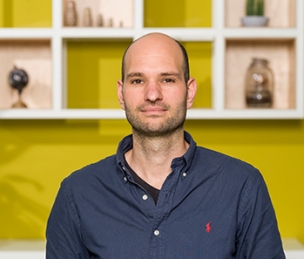Displaying 1 - 3 of 3
-
Hintz, F., Meyer, A. S., & Huettig, F. (2012). Looking at nothing facilitates memory retrieval. Poster presented at Donders Discussions 2012, Nijmegen (NL).
Abstract
When processing visual objects, we integrate visual, linguistic and spatial information to form an episodic trace. Re-activating one aspect of the episodic trace of an object re-activates the entire bundle making all integrated information available. Using the blank screen paradigm [1], researchers observed that upon processing spoken linguistic input, participants tended to make eye movements on a blank screen, fixating locations that were previously occupied by objects mentioned in the linguistic utterance or were related. Ferreira and colleagues [2] suggested that 'looking at nothing' facilitated memory retrieval. However, this claim lacks convincing empirical support. In Experiment 1, Dutch participants looked at four-object-displays. Three objects were related to a spoken target word. Given the target word 'beker' (beaker), the display featured a phonological (a bear), a shape (a bobbin), a semantic (a fork) competitor, and an unrelated distractor (an umbrella). Participants were asked to name the objects as fast as possible. Subsequently, the objects disappeared. Participants fixated the center of the screen and listened to the target word. They had to carry out a semantic judgment task (indicating in which position an object had appeared that was semantically related to the objects) or a visual shape similarity judgment (indicating the position of the object similar in shape to the target). In both conditions, we observed that participants re-fixated the empty target location before responding. The set-up of Experiment 2 was identical except that we asked participants to maintain fixating the center of the screen while listening to the spoken word and responding. Performance accuracy was significantly lower in Experiment 2 than in Experiment 1. The results indicate that memory retrieval for objects is impaired when participants are not allowed to look at relevant, though empty locations. [1] Altmann, G. (2004). Language-mediated eye movements in the absence of a visual world: the 'blank screen paradigm'. Cognition, 93(2), B79-B87. [2] Ferreira, F., Apel, J., & Henderson, J. M. (2008). Taking a new look at looking at nothing. Trends Cogn Sci, 12(11), 405-410. -
Hintz, F., & Huettig, F. (2012). Phonological word-object mapping is contingent upon the nature of the visual environment. Poster presented at the 18th Annual Conference on Architectures and Mechanisms for Language Processing (AMLaP 2012), Riva del Garda, Italy.
Abstract
Four eye-tracking experiments investigated the impact of the nature of the visual environment on the likelihood of word-object mapping taking place at a phonological level of representation during languagemediated visual search. Dutch participants heard single spoken target words while looking at four objects embedded in displays of different complexity and were asked to indicate the presence or absence of the target object. During filler trials the target objects were present, but during experimental trials they were absent and the display contained various competitor objects. For example, given the target word 'beaker', the display contained a phonological (a beaver, bever), a shape (a bobbin, klos), a semantic (a fork, vork) competitor, and an unrelated distractor (an umbrella, paraplu). When objects were embedded in semi-realistic scenes including four human-like characters (Experiment 1, 3, and 4a), there were no biases in looks to phonological competitors even when the objects' contours were highlighted (Experiment 3) and an object naming task was administered right before the eye-tracking experiment (Experiment 4a). In all three experiments however we observed evidence for inhibition in looks to phonological competitors, which suggests that the phonological forms of the objects had been retrieved. When objects were presented in simple four-object displays (Experiments 2 and 4b) there were clear attentional biases to phonological competitors replicating earlier research (Huettig & McQueen, 2007). These findings suggest that phonological word-object mapping is contingent upon the nature of the visual environment and add to a growing body of evidence that the nature of our visual surroundings induces particular modes of processing during language-mediated visual search. References Huettig, F., & McQueen, J. M. (2007). The tug of war between phonological, semantic and shape information in language-mediated visual search. Journal of Memory and Language, 57(4), 460-482. doi: 10.1016/j.jml.2007.02.001 -
Hintz, F., & Huettig, F. (2012). Phonological word-object mapping is contingent upon the nature of the visual environment. Talk presented at Psycholinguistics in Flanders goes Dutch [PiF 2012]. Berg en Dal (NL). 2012-06-06 - 2012-06-07.

Share this page